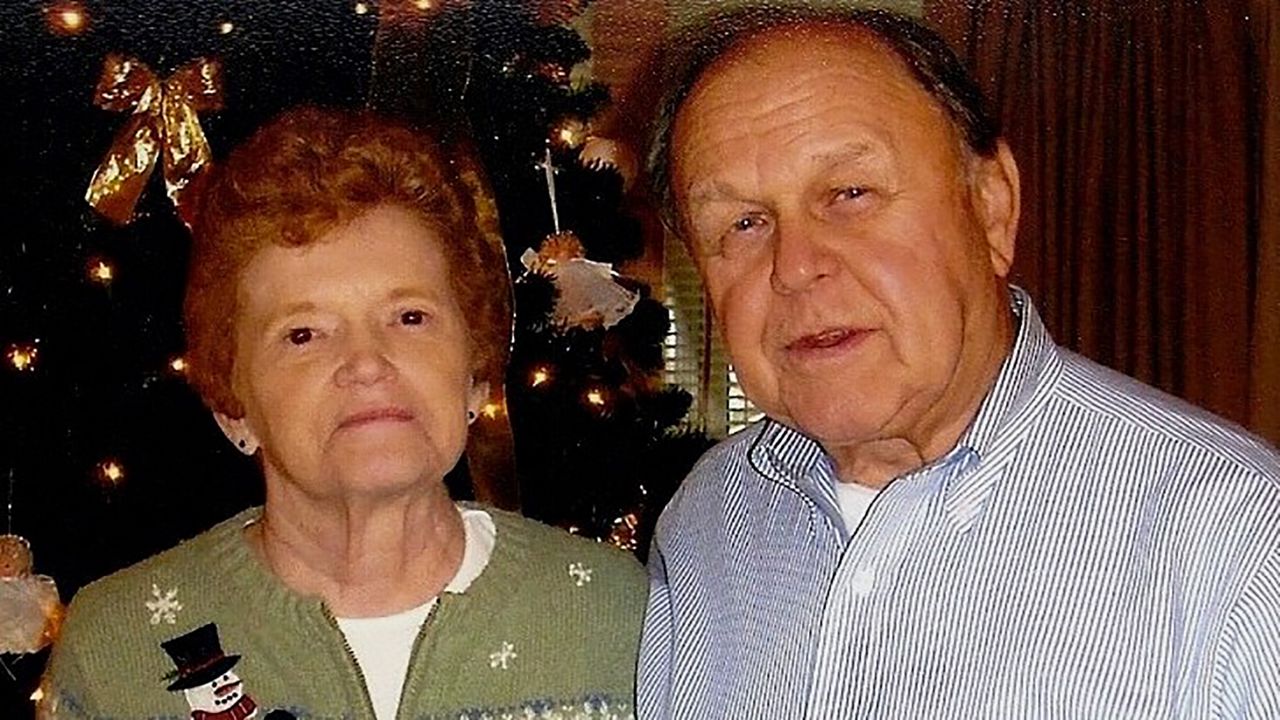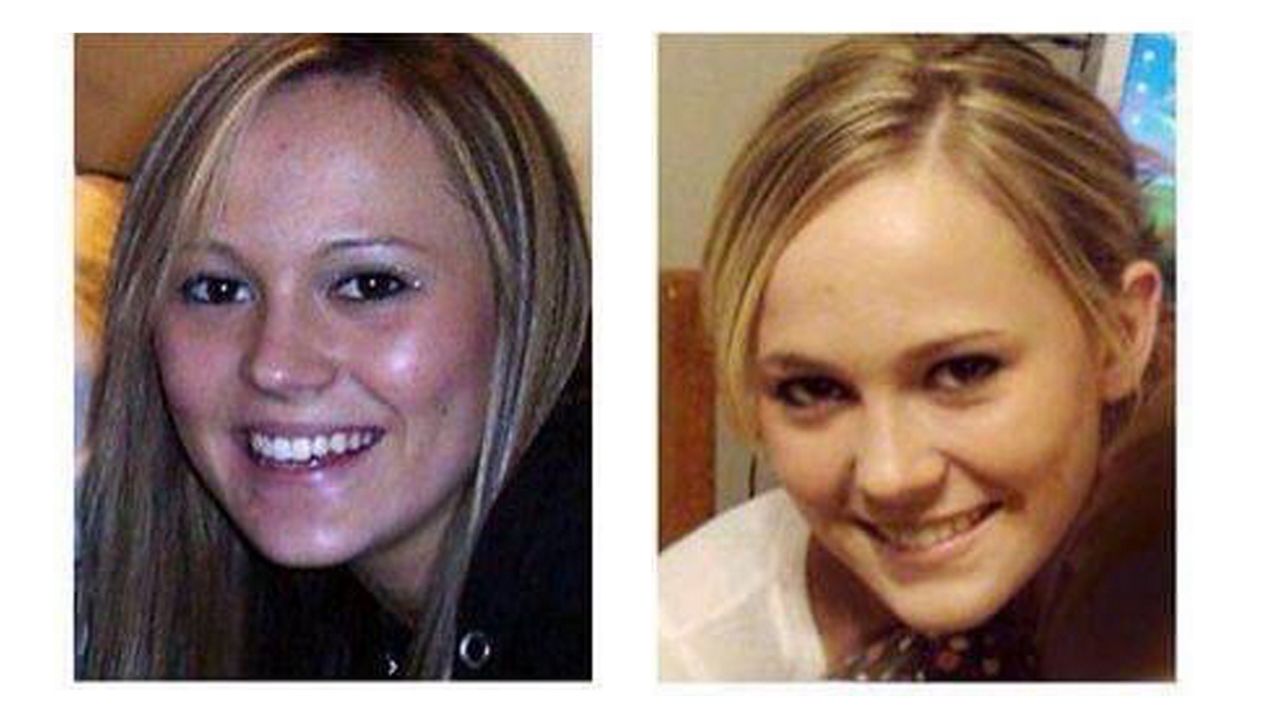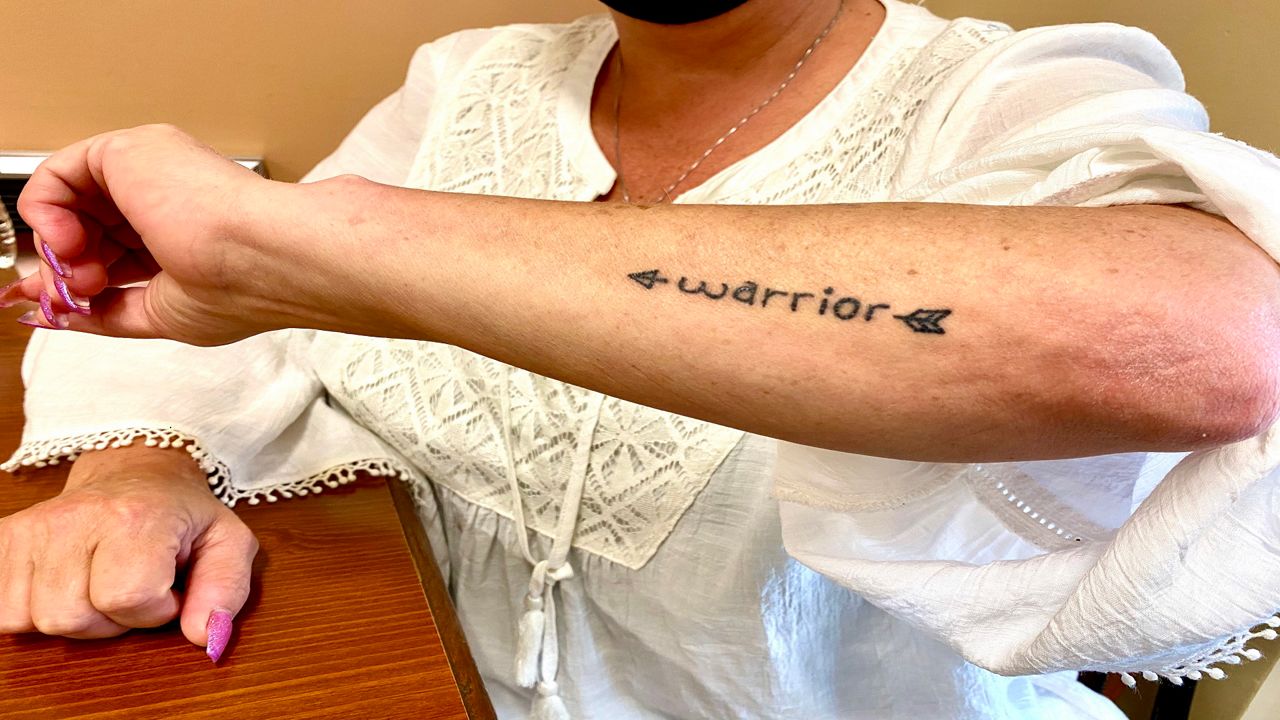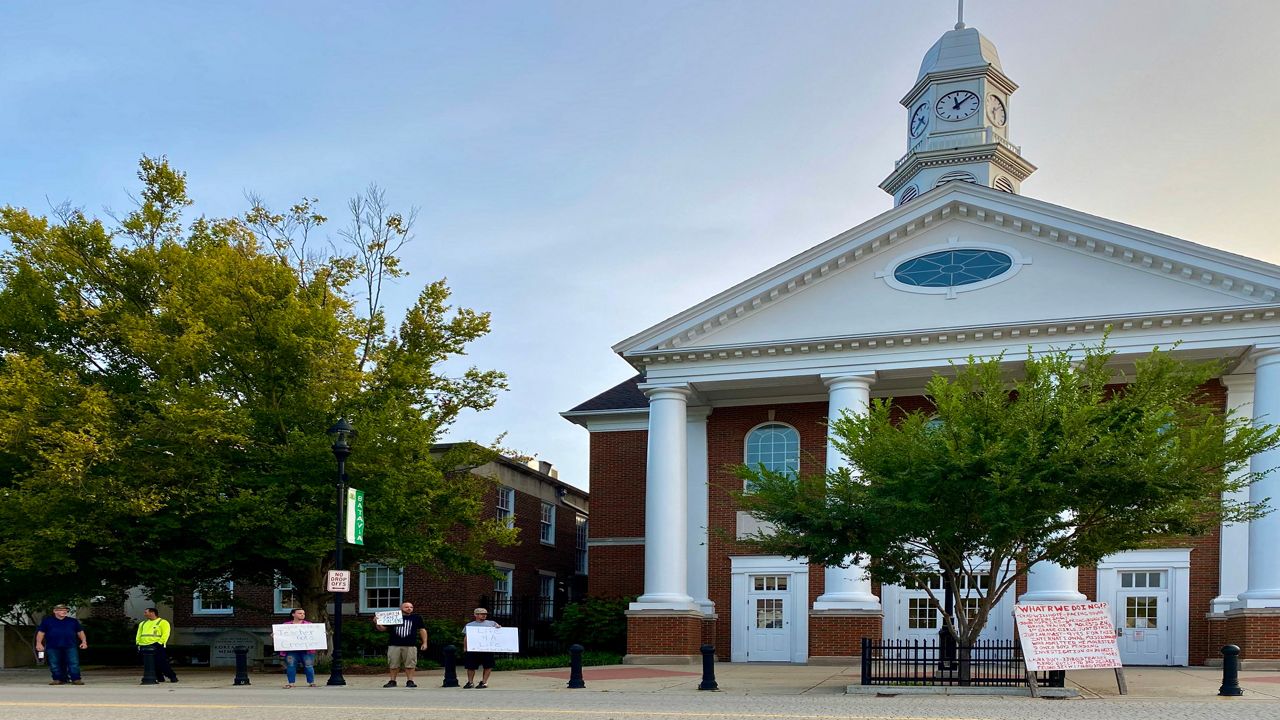FLORENCE, Kentucky — The family of Bill and Peggy Stephenson, who were found dead inside their home nearly a decade ago, is offering a new $50,000 reward leading to the arrest or arrests of those responsible for killing them.
The lead detective on the case said it should not be considered a cold case and has remained active in their pursuit for justice for the Stephenson family all of these years.
"It is not cold. It is old. You have to say it's old; it's 9 1/2 years. Most cases you would want to have solved in 9 1/2 years. But the thing about it is, this case has been alive and breathing for 9 1/2 years,” said Boone County Sheriff’s Office Det. Coy Cox.
The elderly couple lived their lives full of faith and with a mission of spreading the gospel. It is that same faith—along with the reward money offered—that Cox is banking on to solve their murders.
"God knows what happened at the scene. I believe that with all of my heart. And God is in control, and in his time and with his plan, and if it's his will, it will be revealed,” Cox said.
“Our job is just to keep doing the investigation—hitting the hammer, hitting the nail with the hammer, just keep driving,” the self-described Christian investigator said with conviction, sitting inside a conference room at the sheriff’s office in Burlington, Kentucky with a binder full of case notes in front of him on the table.
Cox has been on the case since day one—a case that started with him walking into a baffling crime scene more than nine years ago.
On Sunday, May 29, 2011, just after noon, a family member went to check on Bill and Peggy Stephenson after they did not show up for service at Union Baptist Church. While Peggy, the church organist, would miss occasionally because of fibromyalgia flare up, Bill never skipped a Sunday to worship, Cox said.
"They were very faithful about their church attendance. He was always at church and always at the Trucker's Chapel on Sunday morning. So, when he missed both, when he didn't go to chapel and he didn't show up at church, then they thought, 'Man, there's something really, really weird about that,’” he continued.
When the family member, who has not been publicly named, entered the couple’s Ridge Edge Court condo in Florence, they uncovered a grisly scene. They were both stabbed and suffered blunt force trauma. Further, the suspect inflicted a postmortem injury on at least one of them nearly two hours following their death, Cox divulged.
But from the beginning, he said, the crime scene yielded little evidence and moreover, it appeared to be arranged.
The detective elaborated.
"You have the crime scene and that would have been what played out as any conflict would have happened between the victims and the perpetrator or perpetrators. After the murders were accomplished, the perpetrator or perpetrators stayed in the crime scene or came back to the crime scene and changed everything. Every room in the house had things changed.”
"There were things that were maybe on end tables or up on shelves that were changed, altered, moved, turned over, marked on,” he said. “There were items that seemed to have no significant meaning left in different rooms. Most of the items that were left at the scene appeared to be things that were probably in the residence.”
He explained further how he was able to determine that items were moved or altered following the murders.
"They're not going to come in and move those things before they control the victims. And the way they control the victims were to kill them. So, then you add to that. We know the exact time of death from a medical device that was in one of the victims, and then we know from a postmortem injury that was to one of the victims. That injury occurred at least two hours after the body had already been murdered.”
He would not expound on the type of injury or the exact time of death, but did say that that the crime took place between 1 a.m. and 4 a.m. And the postmortem injury and timeframe gave the dogged detective a clue.
"The wound tells us that they were there at least two hours after, either that or they came back. So, either way, it shows that someone was in there after the murders and was very comfortable inside. That's going to take a considerable amount of time—much more than what the average murderer would choose to spend in a crime scene after they've committed the crime.”
"They chose this. They chose this time. They chose this location. The time was really unusual. They would feel comfortable being in a condo with people above them and next door to them to do the things that played out in the condo. So, that would kind of indicate that this is probably someone who is close to Bill and Peggy, or family, because they're comfortable inside,” he surmised.
The crime scene also included random items, believed to have come from inside the home, surrounding the bodies, appearing at first glance, to be ritualistic in nature.
However, after consulting with other law enforcement and the FBI, Cox said that they came to the conclusion that the items strewn about near the victims were not part of any sort of ritual.
"The baffling part, obviously, is what I've described—and I say, we don't have a crime scene, we have this scene that our perpetrators wanted us to find. So, what they had the opportunity to do was to stage things in the scene to look like different motives.” Cox said.
"If you could picture a scene that would pop in your mind if someone broke into a house to burglarize it, looking for items of value that they might take," he said. "Well, they created that appearance, but they left the things of value. They just ransacked stuff and went through stuff. So, you can only go so far down that trail to say this isn't truly the motive.”
But he said, they think they know the motive. However, it is not something he can share yet publicly.
With new information flooding the tip line throughout the last nine-plus years, they are still missing two crucial pieces of evidence, and they are hoping that someone out there can piece together the puzzle with a new tip.
"One thing you have in a lot of cases, especially with the cause of death, you'll have the instrument that was used to cause the deaths. We don't have that; that was taken from the scene," Cox said.
But, he said, he does know what the murder weapon was based on the injuries.
And whoever committed these crimes not only arranged the scene to appear a certain way but also cleaned up afterward.
"The other big thing that is missing is the actual crime scene. If you have a crime scene where no one has cleaned up and no one has altered—which both of those happened in this case—then you can look at different pieces of evidence from the actual crime scene that will help you know, 'Hey, the altercation happened here.' There might be spatter. There's all kinds of stuff that you're going to have in a typical crime scene," Cox said.

What investigators can do at this point is look at what they do have, and keep that information close to their vests.
"There are very few people on the face of the Earth that know exactly what happened in that crime scene, or in that scene and what has happened. So, that's why we have to guard that so close because we don't have what you typically have in other homicide cases, which is the actual crime scene, which will tell you a lot about the crime,” Cox said.
"Some day we will sit down with that person, and if they choose to talk, then they are going to be able to validate what they did and what they were trying to do and why they were trying to do it,” he said.
Childhood Sweethearts Spreading the Gospel
Cox describes the Stephensons as “just amazing people.”
"If I was murdered and people were trying to find people who didn't like me, they wouldn't have to look very far, you know? With Bill and Peggy, it's just so hard find anything that anyone could even label as a disagreement,” the detective said.
Bill came from a large family; he was one of 15 children, and met his childhood sweetheart, Peggy, while they both attended New Haven School.
After Bill and Peggy got married on Aug. 25, 1956, they worked on a dairy farm in southern Boone County, where they raised their three children: two boys and a girl. When they were killed, they were just three months shy of celebrating their 55th wedding anniversary.
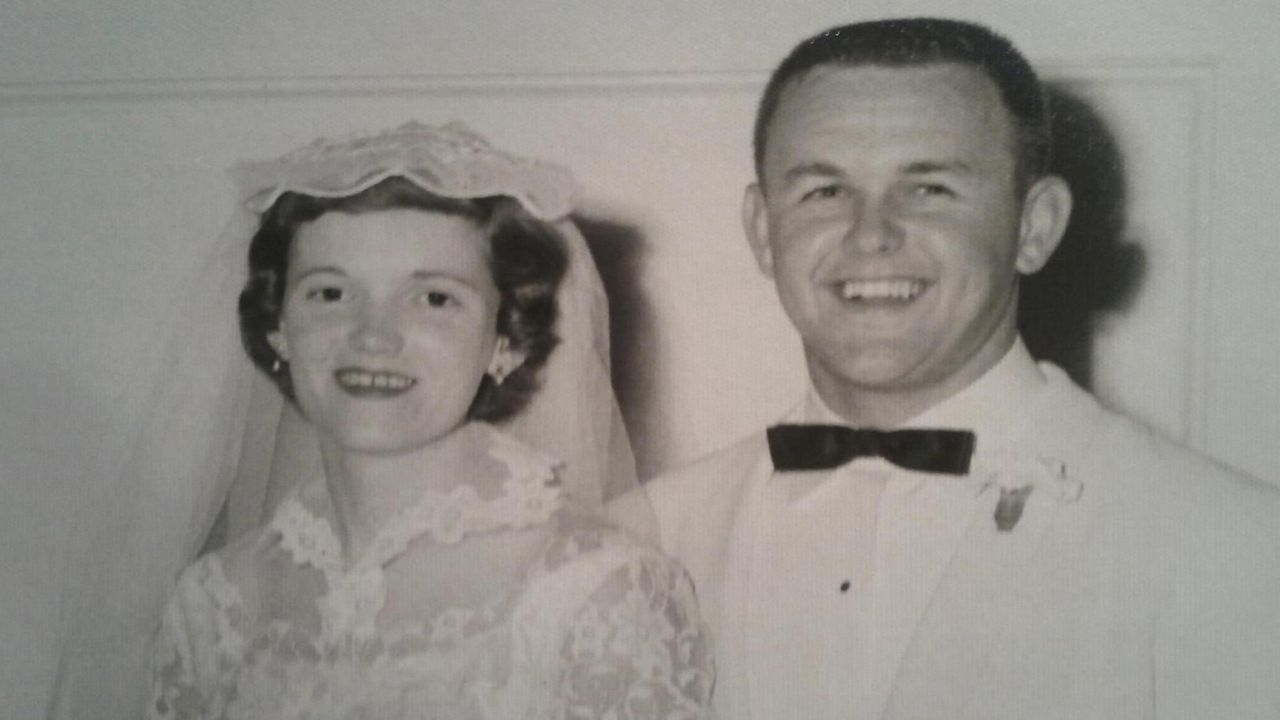
Peggy was a housewife and very active in the church, including serving as the organist.
Bill was working semi-retired at an insurance investment company, but spent much of his time working to spread the gospel as a deacon and chaplain minister at the local Travel Centers of America (TA) truck stop on Burlington Pike in Florence, just down the road from his home he shared with Peggy.
It is at the truck stop, just on the other side of the overpass to Interstate 71/75 and across from the eye-catching red-and-white striped “Florence Y’all” tower, where he would fill empty gas tanks, feed travelers with a hot meal and tell them the word of God all from a parked trailer, known as his “Trucker’s Chapel.”
"He would not give people cash, and he would never bring people back to his residence. He was very guarded about that and very smart, knowing that some people have ulterior motives for the things that they do, so he wasn't just going to hand them cash, but he was very willing to help people—just overly generous. And that's just who Bill and Peggy were every day of their life,” Cox said.
In fact, Bill was involved with several missions throughout Kentucky.
"He would give them the gospel if they would listen, but he wasn't an overbearing person. He wasn't the guy you were going to see standing on the hood of his car in the McDonald's parking lot with his Bible, yelling at people and telling them they're going to hell,” Cox said.
From his years of investigating the case, Cox learned that Bill was the kind of person who would not push religion on anyone who did not want to hear it.
“He was the kind of guy that would look at you and say, 'If you die tomorrow, do you know where you would go?' And some would look back and say, 'I don't want to talk about that...' and he'd say, 'OK, you wanna go fishing?'” he said. “He just had a really soft approach and his main concern, I mean, his commitment was to tell as many people as he could about the gospel and how they could know Jesus as their savior. And that was his mission every day when he went out. It truly was and that's what makes this case so difficult."
In a way, Cox theorized, Bill is still spreading the gospel today.
"You can't talk about Bill and Peggy without talking about the gospel that he went out every day to spread. And so, God's still using that, right? I mean, there are people who are hearing the gospel, or at least presented, because of this case 9 1/2 years later," he said.
DNA and Suspects
The biggest thing for Cox that stands out in this case, he said, was that both Bill and Peggy, who were both 74 years old, had to die.
"If someone wanted to kill just Bill, he did something different every day and he was by himself most of the time when he did it. He would travel to a mission in eastern Kentucky; he would go to Carrollton to help with another event that goes on down there on a weekly basis on Tuesdays. So, there were all kinds of opportunities to kill Bill somewhere far away, where, if he was murdered there, someone would just think, 'Oh, must've been a robbery,'" Cox said.
He continued, "Peggy had some medical issues. If someone just wanted to kill Bill in the condo that night, they could've controlled her very easily. No. 1, they could've just hit her over the head and rendered her unconscious. Or, if there were two of them, they could've just held her in the bed while they did what they did with Bill and then they left if they just wanted to kill Bill. Same thing with Peggy, Bill would've been pretty easy to control. But they could've killed Peggy at any time while Bill was off doing his mission work every day."
"So, whoever chose this, because of the location, because of the time, because of it being in a residence where people are above and next door, the one thing that is really, really obvious, is that both Bill and Peggy had to die," Cox said.
Furthermore, whoever chose this location knew what they were doing, he said.
The couple's residence was somewhat secluded, and within the community, he said, there is only one way in and one way out.
"That is something that typically a murderer wouldn't choose because if they do have to flee in a hurry, then they are going to be restricted to one direction."
Investigators were able to uncover something from the scene that may one day put a face to the killer.
In August 2012, the Kentucky State Police Crime Lab discovered an unidentified DNA profile, found in multiple locations of the crime scene. With that, detectives have the genetic profile of the person responsible for the murder.
But it is complicated piece of evidence, he said.
"It has some complexity to it. Our DNA profile is not suitable for genealogy and/or phenotyping at this time," Cox said.
Phenotyping is how investigators can predict the person's height, hair color, etc., through a DNA sample. Genetic genealogy may forensically reveal a relative with DNA profile.
"We hope that someday, they will develop the technology to be able to do our complex profile,” Cox said.
The truck stop where Bill ministered to travelers has been, and continues to be a hotbed for tips, opening the suspect pool to include truckers and travelers from across the country—some just passing through the northern Kentucky pit stop.
In fact, over the years, Cox and his partner have traveled to several states to investigate leads.
"That opened up a lot of things—pretty complex," he said. "We were physically going to locations and different states to interview people and collect DNA and fingerprints and alibis from truckers. And we were also calling law enforcement in almost every state in the country to collect those items.”
Those DNA samples collected, from across state lines and neighboring jurisdictions have been compared to the DNA profile that they were able to develop from the crime scene. That DNA profile is currently in the Combined DNA Index System, as known as CODIS, a national law enforcement database that can compare and match DNA to other offenders throughout the country.
"We actually have a tip now, 9 1/2 years later that just came in, about a truck driver, an individual, who used to live in the area and then just, without explanation, moved away and no one has really heard from again,” Cox said.
Tips like that and the DNA profile give the investigators several suspects to look at and keep in mind as they continue to dig deeper into the case.
"We can't take anyone off the board because there are some issues that are just complex. So, we do vet people and we determine them to be a low priority so we can move on to others. And there are a few people who remain at the top of that list.”
Early on in the investigation, there was speculation that the couple’s nephew, Charles “Stevie” Stephenson may have had something to do with the double homicide, Cox confirmed.
"I can tell you that he is one of the people who has been on our list," he said.
Stevie was convicted of an unrelated homicide in Indiana and is currently behind bars serving that sentence, Cox said.
In 2012, Leigh Jennings, 67, was found beaten to death inside her Aurora, Indiana home, just about a year after the Stephenson couple were found murdered inside their condo—a 30-minute drive away in neighboring Kentucky, police said.
Jennings was found bludgeoned to death inside her kitchen, according to police.
The investigator said that they also looked closely at admitted serial killer, Samuel Little, who in the past few years, has confessed to murders spanning decades and the country, including in Ohio and Kentucky.
"Samuel Little was in Columbus, (Ohio) and was arrested in April of 2011 and he was released like five days later. So, May 29, 2011, Bill and Peggy were killed. He wasn't picked up again until June 2011 in Louisville, and he traveled on foot. Hitchhiked. Well, if you draw a line, especially with Interstate 71, guess where he came through at some point in time. And it just so happens, it's right in that magical window,” Cox said.
They spent time looking at Little's other crimes, including murders he admitted to committing in Cincinnati about 20 minutes away, just on the other side of the Ohio River.
"His crimes were really different, and he was at the point that if you asked him about it, then he would tell you,” Cox said.
While his timeline and travel seemed to line up with Bill and Peggy’s slayings, Cox said, they do not believe he is the culprit. However, they have not marked him off of their suspect list, although he did move lower on the list, Cox revealed.
It is unclear from the evidence—or lack thereof—whether or not there is one perpetrator or multipole offenders, however, the DNA profile they recovered from the scene is derived from only one person, Cox said.
And that person, he said, could be anyone.
"Any person is capable of anything under the right circumstances,” Cox said.
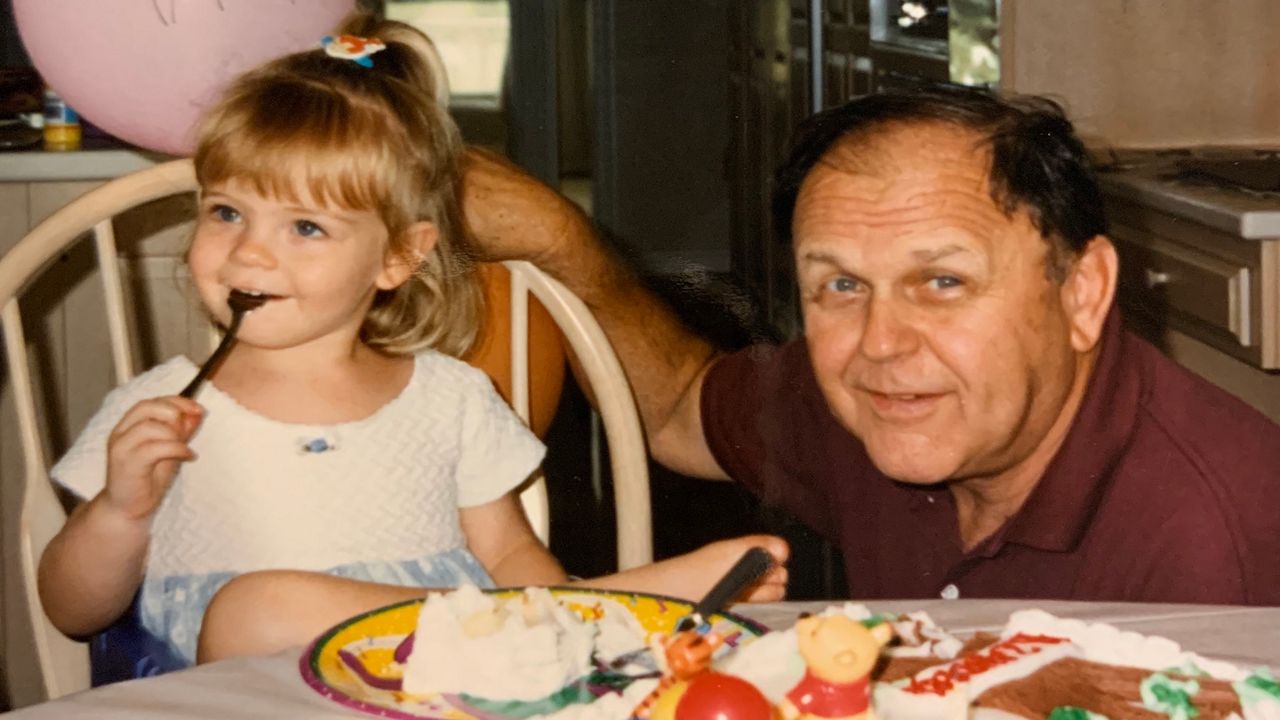
But whoever killed her grandparents, Nicole Stephenson said, she hopes they will be caught and held responsible.
"I have to imagine that they knew the pain and suffering this would cause," the 26-year-old said. "I hope you get caught, but I also hope that maybe you're a better person now. I don't know how anyone could ever do something like that, and maybe you're just rotten to the core, but maybe someday you'll be better.”
Nicole was 16 when her father’s parents, her “mamaw and papaw,” were brutally murdered in 2011. She is one of seven grandchildren and five great-grandchildren—only one of whom Bill and Peggy met.
"I didn't know anyone to have a bad word to say about them," Nicole said.
The work they did for the community and strangers alike was evident by the thousands of mourners who showed up to their funeral to pay their respects, Nicole said.
Her mamaw was “more of the mild one; sweet and gentle,” she said.
She recalls, the day before they died, Nicole posted a photo of her and her friends on Facebook and made a comment about being so tall.
Peggy commented on the social media post: “You may be the tallest, but you’re also the best.”
The grieving granddaughter snapped a screenshot of that exchange between them and cherishes it to this day as the last time her grandma would address her.
Her papaw, on the other hand, was outgoing.
"My grandpa was extremely personable, talked to anybody. He was always bouncing around talking to people, helping people out," Nicole said.
In fact, he made a point of calling his grandchildren at least once a week just to check in with them and see how they were doing—something Nicole took for granted back then, and wishes now she could hear the phone ring and his voice on the other line today.
"You never really realize how valuable it is,” she said. “I also miss what our relationship could've been because I was only 16. I wasn't that mature or interested in talking with them about their lives. It was more of—they were interested in what I was doing. It would be really nice now, I think. I think they both had really interesting lives, and I would love to be able to talk with them more about that and know about that. I would just spend more time in conversation with them.”
One of Nicole’s fondest memories growing up with them was when all the grandkids would spend their summer days at their pool at the Stephensons’ condo.
"My grandpa had these great pants that zipped off into shorts with zippers around them," she giggled reminiscing. "So, he would come and swim with us. And then my grandma, she was a little more frail and pail, and she would come down to the pool and sit under the umbrella and eat lunch.”
She relishes in the many memories to choose from, like birthdays and holidays, spent at her grandparents’ clubhouse within their condominium community.
"We'd usually get together on Christmas and Easter with the whole family," she said.
But what has stuck with her throughout her life, now a decade later, was their strong devotion to their Christian faith and helping others.
"They were both really into acts of service. I think acts of service would be their love language. (Grandpa was) just always one of those selfless people that would drop anything if somebody called and needed help," Nicole said proudly.
"That was a big, big part of both of their lives. And I think it's pretty awesome, regardless of the cause, to dedicate your life to something like that, to have it mean so much to you. That was kind of the thing that they revolved around," she said.
Their “acts of service” left a lasting impression on her growing up and to this day.
"It's easy to take that stuff for granted when they're around, so once someone passes away that can take on a new meaning or a new significance for you," she said.
For her, it did.
She strives to carry on their legacy of helping others in her own way.
"It's more of a challenge or something to aspire to. I think that says something about a person, to be able to rally around some cause and dedicate your life to it. It's a little further away from the Christian-sphere, but I'm interested in activism, and that's a reflection of their original way of life," Nicole said.
"I think the common denominator is helping people and trying to improve people's lives, and using what you have, to contribute to the wellbeing of someone else,” she said. “I would hope that they would be proud of me and our whole family and be able to see what we are doing with our lives.”
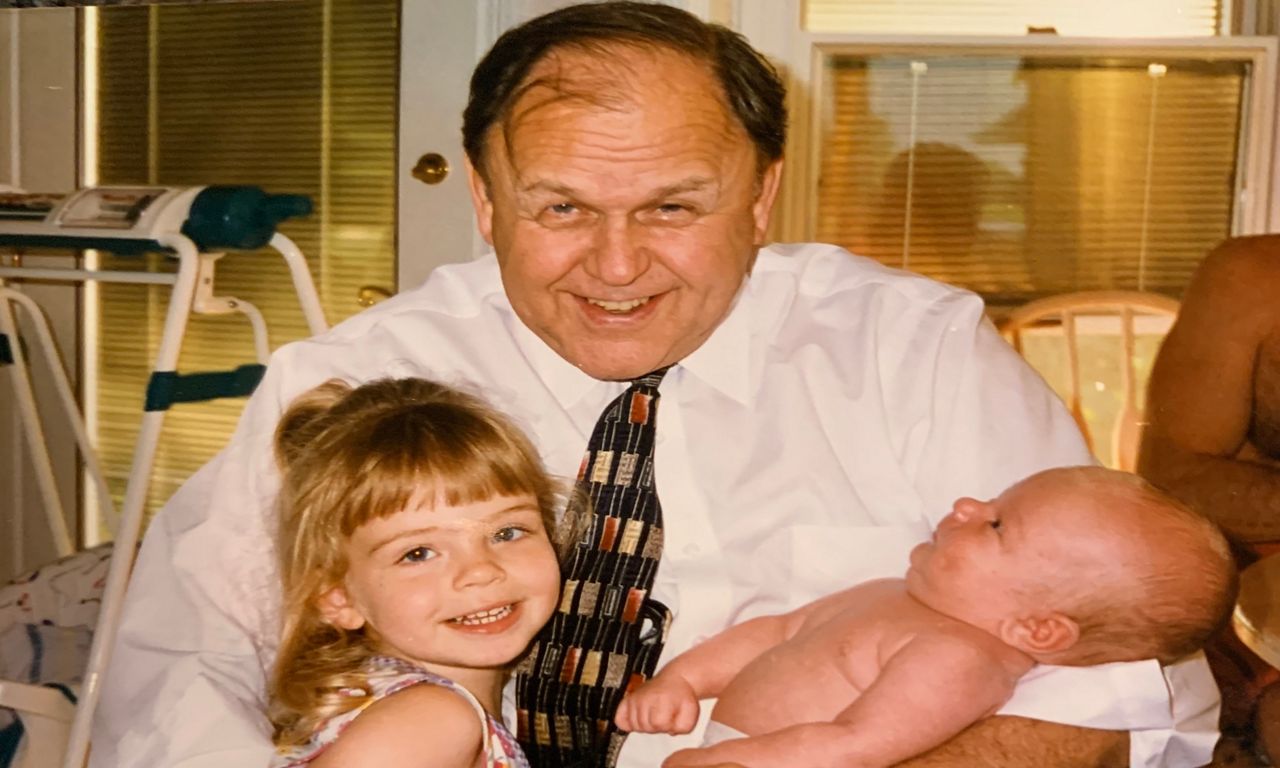
Losing her grandparents in the way she did was heart-wrenching for the whole family.
"You typically expect to lose your parents and, or your grandparents during your lifetime at some point, especially your grandparents. You pretty much know that you're going to watch them pass away at some point," Nicole said.
But not in the tragic way they died.
"It was the worst thing ever. I don't know how else to say it,” she said. “You never expect that kind of thing to happen to you, obviously. It was totally out of the blue. Random. We had no sense that anything like that could happen to us. It was absolutely awful."
As a family, she remembered, it was a scary time in the beginning, not knowing many details, especially who and why someone ripped her grandparents from them.
"We didn't know what the motive was or if it was random or if it was targeted, or what was going to happen next. There's a lot of uncertainty, I'd say in those first two to three years really. So, that was really hard to live with," Nicole said.
Their deaths shifted everything about how they look at the world, she said.
"It changes your view of humanity. It shakes your feeling of safety in the world. You just don't feel secure anymore. That false illusion of safety and security is sometimes broken, and I'm sure that's started to be repaired nine years later, but especially in those first few years, it was really hard," Nicole said.
These days, the Stephenson family’s regular Easter and Christmas get-togethers are not the same and never will be because they are always missing two—and more so, because they do not have any resolution in the case.
"It was really tragic,” Nicole said. "The killer or killers, as Det. Cox would say, we haven't found out who they are. So, they're still potentially walking around living life and so that's also really hard."
For her family, justice is what she believes will allow the healing process to begin.
"It's never going to bring them back. It's not going to change what happened, but you would like to think that it would bring some sense of closure, a little bit. I'm not sure how realistic that is, but I would hope that if someone was apprehended and sentenced that that would close a little chapter of the story and that maybe a little part, that part that wants justice could start to heal a bit more."
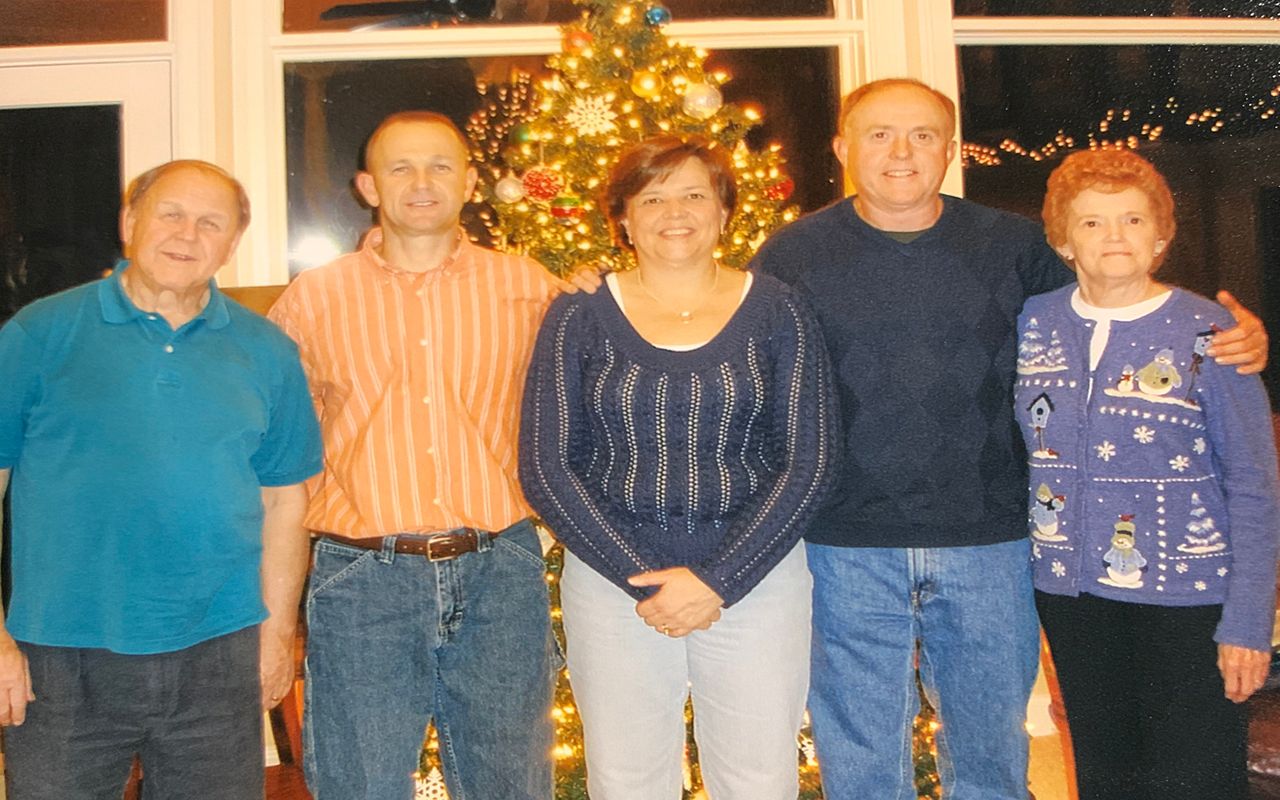
Family, Detective Have Faith in Reward, New Tips and Justice Coming
Nicole recalls a comment on Reddit thread about her grandparents’ case, regarding the reward money: "Why do we have to pay people to do the right thing?"
But for her family, it's more of an incentive to come forward—even putting the tipster’s own safety in jeopardy.
"If you're going to give some information about someone, especially who you believe murdered two elderly people, that's a risk. You're risking something to help someone else, and so, if you can sweeten the deal a little bit, get some money for it? We don't care about the money. If that would tempt someone to say something, then that's fine. It doesn't matter if you're doing it for just out of the goodness of your heart or because you need $50,000. It doesn't matter. We want the information either way," she said.
Regardless of what that tip is, no matter how big or small, she pleaded, just call.
"Just call up on this tip line, just in case. Those are the kind of things that sometimes just turn the whole case around," she said.
The family hopes that a new reward being offered will be the motivation someone needs to come forward with the right clue to solve this case nearly a decade later, and do the right thing like Nicole’s grandparents strived to do for others every day of their lives.
But decade or not, Cox said, do not call this a cold case.
“We have not had a day or a week where my partner and I look around and say, 'We have nothing to do on the Stephensons' case.' There's never been a day where we've exhausted everything we have to do on the Stephensons' case. It's been amazing; something to do on this case the whole time. It's really rare, especially in a case where you really lack evidence; you really don't have a crime scene,” Cox said.
The sheriff’s office has received tips throughout the years, including three recently that give them hope because the information given was not in any details that were released publicly.
"It'll happen. I'm hoping it happens soon because I'd really like to retire. But I'm committed, at least until my health holds out to stick with it until we get this thing solved,” Cox said. “It is a solvable case and we are—I think we are getting there. It's gonna happen. It's gonna happen."
Cox implores anyone with any information, no matter how small they think it is, to call the Boone County Sheriff’s Office.
"If they think that their information doesn't really mean anything, call anyway. We can determine that. Give us the information, that's our job to look at it," he instructed. "Sometimes you might have a big piece of the puzzle but the corner is missing and then someone calls in with that little piece of information and that may fit right in. If it's on your mind and it's bothered you for 9 1/2 years, you should tell us and we'll see if it fits."
The main puzzle piece that is going to solve this case alongside faith, Cox said, is "solid evidence... and it's coming."
Nicole and her family pray that he is right.
"It's been tough lately. It's kind of bringing things back up to the surface. Because after so long it's like, 'Is it really gonna be solved?' It's been so long. It's kind of easy to just forget about it or try to think about it. But then when all this stuff starts coming back up again, it's like, 'Oh my gosh, this might actually happen. I don't know.' So, after so long, it's kind of mixed emotions, honestly," Nicole said.
Today, if Nicole could have just one more conversation with her mamaw and papaw, she said, she would like to get to know them better.
"Now that I'm older, I think I would have a much greater appreciation for, 'What were you like when you were my age,' that kind of thing. That would be really nice to just talk to them more as people, what they're interested in and what their lives are like," she said.
If you have any information about the Bill and Peggy Stephenson case, call the Boone County Sheriff’s Office at 859-334- 8496, or email tips to stephensontip@boonecountyky.org. For more information about the case and how you can submit a tip, visit the Boone County Sheriff’s Office’s website.





